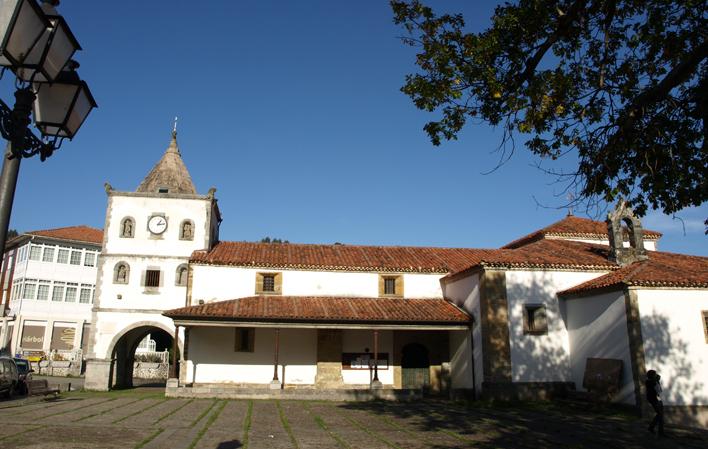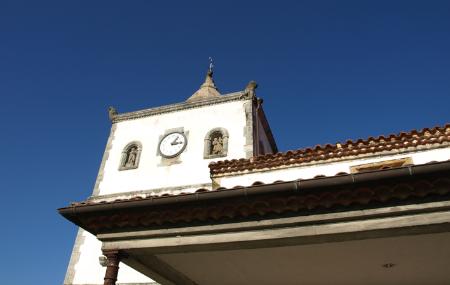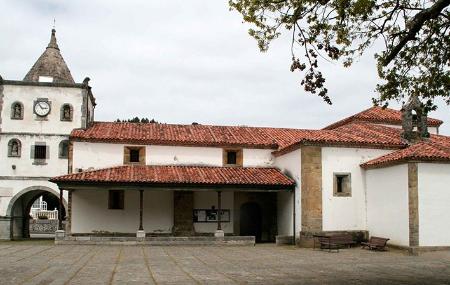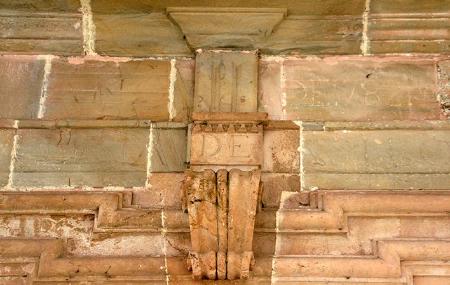
Church of Santa María in Soto de Luiña
- Title Cudillero Western Asturias
- Address Address: ■ 33156 - Soto de Luiña
- Phone Phone: 985 596 157
- Site Site: https://www.cudillero.es
- Period Period: Baroque
- Management Management: Declared a Historic-Artistic Monument
Info
The church of Santa María, in the town of Soto de Luiña, is considered one of the most outstanding works of rural Asturian Baroque. The tower was begun in 1712 and the chevet of the central nave was finished in 1752, with Pedro García de Avilés as master builder. It stands out for the originality of its design, with a tower at the foot of the church supported by robust and harmonious columns, covered by four well-crafted ashlars that support a curious statue known as "The Giant".
The tower has several niches along its three façades that house statues, some of them made of wood and others of stone. The rest of the volumes that make up the building: portico, naves, sacristy, chapels, etc. form a harmonious whole that seems designed to please the beholder. Inside, the starred vaults with rich ornamentation are very noteworthy, as well as several baptismal fonts of great historical interest. In the central nave there is an interesting and airy stone ambo on a helicoidal column, attached to one of the main arches of the nave.
The altarpieces of this church deserve special mention. All of them stand out for their careful workmanship, which in the case of the central one, forms an outstanding example of an exedra "Cascarón" altarpiece with carvings and well elaborated artistic elements that could be attributed to the workshop of José Bernardo de la Meana.
At the foot of the south nave is the altarpiece of Santa Inés, structured on a beautiful tree of life with scenes from the life of Jesus. This altarpiece was built by the dominant family of the time, a fact that led to a curious dispute with the neighbours. In the north nave, the church has one of the few examples in Asturias of a rosary altarpiece, which, together with other elements present in this unique building, bears witness to the strong Dominican presence in the Asturian rural environment of the time. Throughout the nave, there are other smaller but no less interesting altarpieces, such as the one dedicated to Santa Rosa de Lima.
This church is a perfect example of popular effort as a common achievement, which is interpreted by some scholars as a symbol of the people's liberation from the lordships. In this sense, the ledger reflects how the peasants contributed labour and materials to pay for the construction.
The pre-Romanesque church of San Salvador de Priesca (Villaviciosa) together with the church and rectory of Santa María de Soto de Luiña (Cudillero), both on the Coastal Way, and the Cathedral of El Salvador in Oviedo/Uviéu and the Monastery of San Salvador de Cornellana (Salas), both on the Primitive Way, have been recognised as Unesco World Heritage Sites.
Map
Schedules and prices
Open during hours of worship.
Free admission.




